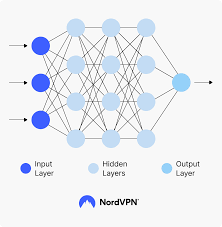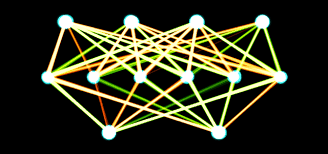Neural networks have revolutionized the field of artificial intelligence, paving the way for groundbreaking advancements in machine learning and cognitive computing. Mimicking the structure and function of the human brain, neural networks are a complex network of interconnected nodes that work together to process and analyze vast amounts of data.
At the core of a neural network are neurons, which are mathematical functions that receive input signals, process them through weighted connections, and produce an output signal. These neurons are organized into layers, with each layer performing specific tasks such as feature extraction, pattern recognition, and decision-making.
One of the key strengths of neural networks is their ability to learn from data. Through a process known as training, neural networks adjust their internal parameters based on examples provided during the training phase. This enables them to recognize patterns, make predictions, and perform tasks with increasing accuracy over time.
Neural networks are used in a wide range of applications, from image and speech recognition to natural language processing and autonomous driving. Their flexibility and scalability make them ideal for handling complex tasks that traditional algorithms struggle with.
As research in neural networks continues to advance, we can expect even more sophisticated models that push the boundaries of what is possible in artificial intelligence. With their remarkable capabilities and potential for innovation, neural networks are sure to play a central role in shaping the future of technology.
Understanding Neural Networks: Answers to 8 Common Questions
- What is a neural network?
- How does a neural network work?
- What are the types of neural networks?
- What are the applications of neural networks?
- How are neural networks trained?
- What is deep learning and how is it related to neural networks?
- What are the advantages of using neural networks?
- Are there any limitations or challenges associated with neural networks?
What is a neural network?
A neural network is a powerful computational model inspired by the structure and function of the human brain. It consists of interconnected nodes, or artificial neurons, organized in layers that work together to process and analyze data. These networks are designed to learn from examples, adjust their internal parameters through training, and make predictions or decisions based on the patterns they discover. In essence, a neural network acts as a sophisticated information processing system that can be trained to perform complex tasks such as image recognition, natural language processing, and more.
How does a neural network work?
A neural network operates by simulating the interconnected structure of the human brain through a complex network of artificial neurons. These neurons receive input data, process it through weighted connections, and produce an output signal. The network is organized into layers, with each layer performing specific tasks such as feature extraction and decision-making. During the training phase, the neural network adjusts its internal parameters based on examples provided, allowing it to learn from data and improve its ability to recognize patterns and make accurate predictions. This iterative process of learning and adjustment enables neural networks to perform a wide range of tasks, from image recognition to natural language processing, with increasing accuracy over time.
What are the types of neural networks?
There are several types of neural networks, each designed for specific tasks and applications. Some common types include feedforward neural networks, which are the simplest form and are commonly used for tasks like image recognition; convolutional neural networks (CNNs), which excel at processing visual data and are widely used in computer vision applications; recurrent neural networks (RNNs), which are ideal for sequential data tasks such as speech recognition and natural language processing; and long short-term memory (LSTM) networks, a specialized type of RNN that is effective for handling long-range dependencies in data. Each type of neural network has its strengths and limitations, making it important to choose the right architecture based on the specific requirements of the task at hand.
What are the applications of neural networks?
Neural networks have a wide range of applications across various industries and domains. One common application of neural networks is in image recognition, where they can identify objects, faces, and patterns in images with high accuracy. In the field of natural language processing, neural networks are used for tasks such as sentiment analysis, machine translation, and speech recognition. Neural networks also play a crucial role in finance for tasks like fraud detection, stock market prediction, and risk assessment. Additionally, they are utilized in healthcare for medical image analysis, disease diagnosis, and personalized treatment recommendations. Overall, the versatility and effectiveness of neural networks make them a powerful tool for solving complex problems in diverse fields.
How are neural networks trained?
Training a neural network involves a process where the model learns to make accurate predictions by adjusting its internal parameters based on labeled data. This process typically consists of feeding input data into the network, comparing the predicted output with the actual output, calculating the error, and then using optimization algorithms like backpropagation to update the weights and biases of the neurons. Through iterative training with large datasets, neural networks gradually improve their ability to generalize and make accurate predictions on new, unseen data. This training process is crucial for ensuring that neural networks can effectively learn patterns and relationships within complex datasets across various applications in artificial intelligence.
What is deep learning and how is it related to neural networks?
Deep learning is a subfield of machine learning that focuses on training artificial neural networks with multiple layers to learn complex patterns and representations from data. In the context of neural networks, “deep” refers to the presence of multiple hidden layers between the input and output layers. These deep neural networks are capable of automatically discovering intricate features and relationships in data, making them highly effective for tasks such as image recognition, natural language processing, and speech recognition. Deep learning is closely related to neural networks because deep neural networks are a specific type of neural network architecture that has enabled significant advancements in artificial intelligence by leveraging the power of multiple layers for hierarchical feature learning.
What are the advantages of using neural networks?
Neural networks offer a multitude of advantages that make them a powerful tool in the realm of artificial intelligence. One key advantage is their ability to learn and adapt from data, allowing them to improve their performance over time through training. Neural networks excel at handling complex and non-linear relationships in data, making them well-suited for tasks such as image recognition, natural language processing, and predictive analytics. Additionally, neural networks can generalize well to new, unseen data, providing robust and reliable results. Their parallel processing capabilities enable them to work efficiently on large datasets, speeding up computation and analysis. Overall, the versatility, scalability, and accuracy of neural networks make them a valuable asset in solving a wide range of real-world problems in various industries.
Are there any limitations or challenges associated with neural networks?
Neural networks, while powerful and versatile, also come with their own set of limitations and challenges. One common challenge is the “black box” nature of neural networks, where the inner workings of the model can be difficult to interpret or explain. This lack of transparency can make it challenging to understand how a neural network arrives at its decisions, particularly in critical applications such as healthcare or finance. Additionally, neural networks require large amounts of labeled data for training, which can be costly and time-consuming to acquire. Overfitting, where the model performs well on training data but poorly on unseen data, is another limitation that neural networks face. Despite these challenges, ongoing research and advancements in neural network architecture and training techniques are helping to address these limitations and unlock the full potential of this transformative technology.




